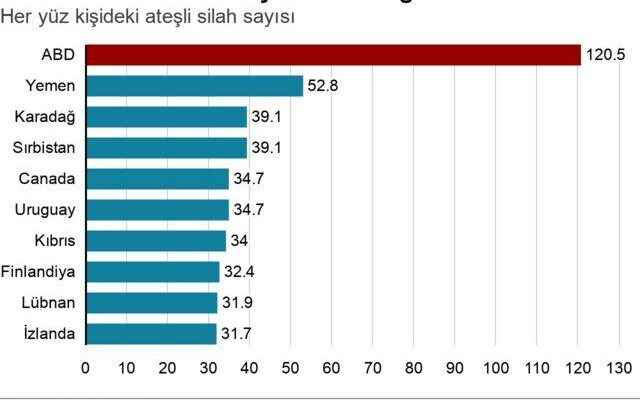Deaths caused by firearms are part of everyday life in the United States.
Between 1968 and 2017, 1.5 million deaths in the country were caused by gunfire, which is more than the total number of US soldiers killed in every conflict since the American War of Independence, which began in 1775.
In 2020 alone, more than 45,000 Americans were killed by firearms or committed suicide. The data show that this number has increased by 43 percent since 2010 and by 25 percent compared to five years ago.
However, there are those who support the idea that owning a gun is a constitutional right, and this is a highly political issue.
HOW MANY WEAPONS ARE IN THE USA?
According to data from the Switzerland-based Small Arms Survey research project, there were approximately 390 million guns among civilians worldwide in 2018.
There are 120.5 firearms for every 100 people in the United States. This number was 88 percent in 2011, which is considerably higher than any other country.
The data show that the rate of gun ownership has increased significantly in the USA in recent years. According to a study published in February in the Annals of Internal Medicine, 7.5 million adults in the United States, nearly 3 percent of the population, bought their first gun between January 2019 and April 2021. Half of these people are women and 40 percent are black or Hispanic.
In the United States, 11 million people, including 5 million children, are exposed to firearms at home.
A 2021 study by the American Academy of Pediatrics links the increase in gunning during the coronavirus pandemic to gunshot wounds, including children’s.
HOW DO WEAPON DEATH ACCOUNT IN THE USA?
According to the CDC, a public health organization in the USA, a total of 45,222 people died in 2020 due to firearms.
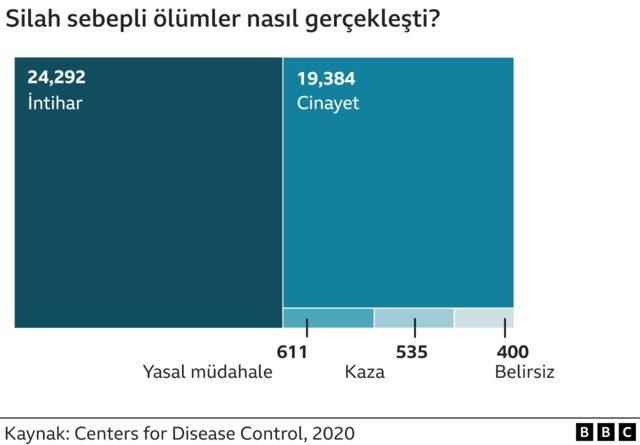
While mass shootings are more common in the media, it should be noted that 54 percent of firearm deaths, or 24,300 of them, are suicides.
The American Journal of Public Health wrote in 2016 that there was a strong correlation between the level of armament in the United States and the suicide rate by firearms.
Proponents of stricter gun laws in the US highlight statistics on mental health and easing of gun ownership sanctions.
COMPARISON OF DEATH BY FIREWEAR IN THE USA WITH OTHER COUNTRIES
According to the CDC, 43 percent of firearm-related deaths in the United States in 2020, equivalent to 19,384 people, are homicide. Every day, approximately 53 people die as a result of the use of firearms.
The data also reveal that 79 percent of all homicides are the result of firearms.
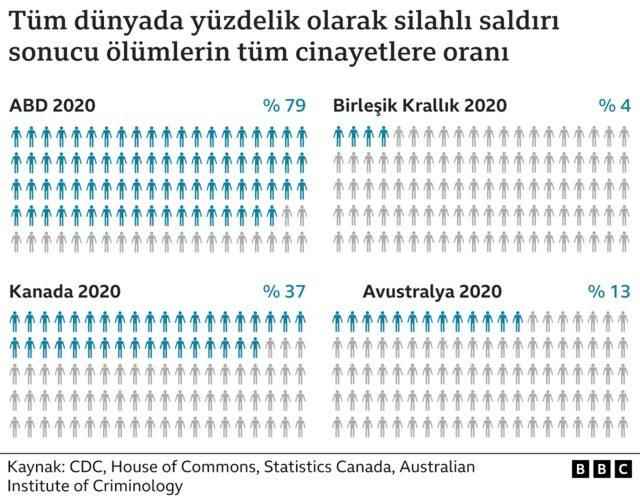
DO MAJOR ARMED ATTACKS CAUSE MORE DEATH?
“Mass deaths” as a result of major armed attacks draw more attention all over the world.
According to the FBI, between 2000 and 2020, there were 345 active shooting incidents in the United States, resulting in a total of 1024 deaths and 1,828 injuries.
The bloodiest event was the 2017 attack in Las Vegas that killed more than 50 people and injured 500.
However, less than 30 people die in most shooting incidents.

WHO DEFENDS THE WEAPON RESTRICTION?
Support for stricter gun laws fell in 2020 compared to 2014, according to Gallup research and consulting agency research.
Only 52 percent of Americans surveyed said they wanted stricter gun laws. 35 percent said they were satisfied with current laws.
But 11 percent argues there should be less stringent gun laws.
According to Gallup’s study, Democrats advocate stricter gun laws at a rate of 91 percent. But only 24 percent of Republicans agree.
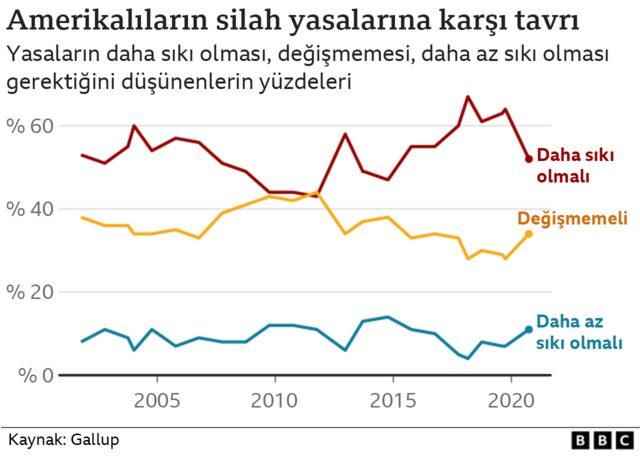
Some states have taken steps to ban or strictly regulate semi-automatic weapons. Laws vary by state. Owning a semi-automatic weapon, for example, is prohibited in California, with exceptions.
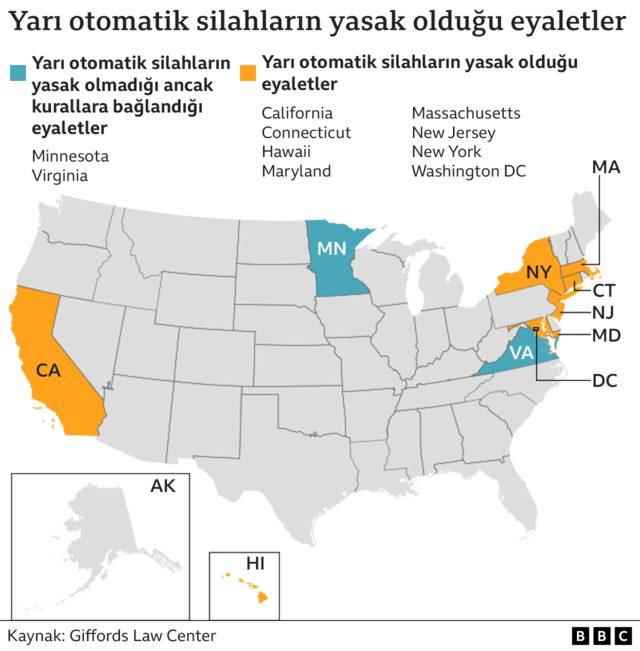
In some states, regulations such as restricting the sale of guns to people with mental disorders or putting them on the “watch” list are openly supported by some politicians.
WHO IS AGAINST WEAPON RESTRICTION?
The National Rifle Association (NRA), which was founded in 1871 and has an additional budget to influence congressmen on arms policy, is the strongest gun lobbying organization in the United States.
Although the NRA was reported to have gone bankrupt in January, the agency was committed to continuing activities such as firearms safety and education.
This and other groups that are against gun control continue to spend money to spread their message during election periods.
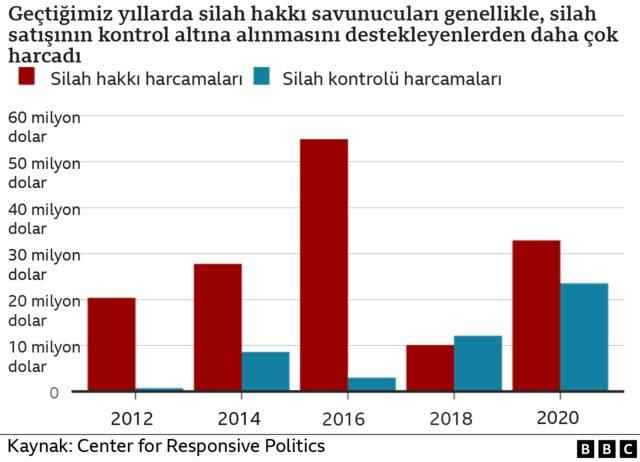
In some states, gun carrying restrictions are being eased as much as possible. For example, in June 2021, Texas Governor Greg Abbott signed into law a law allowing state residents to carry unlicensed and untrained guns.
Similarly, on April 12, Georgia became the 25th state to remove the required permit to carry firearms. In other words, anyone in the state has the right to carry a firearm without a license or permit.
